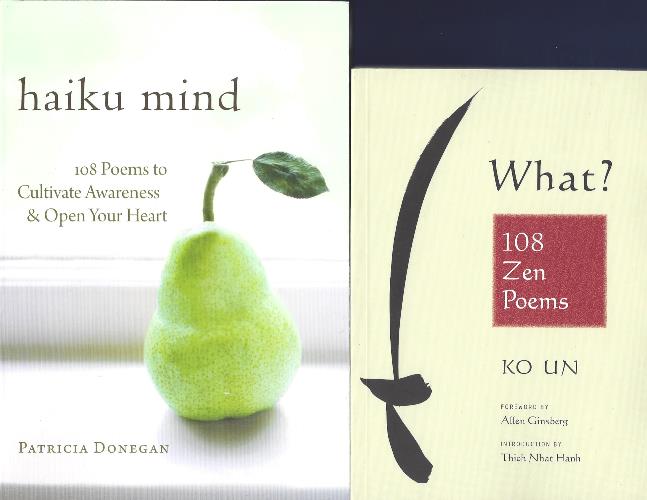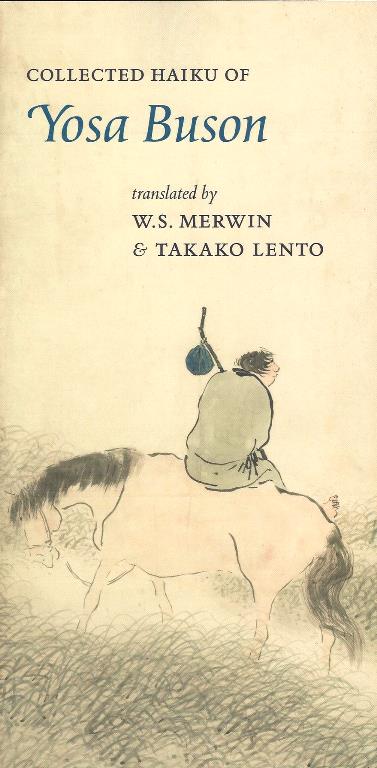 |
 Trên TV đã đi 1 đường giới thiệu nhà thơ Đại Hàn, Ko Un, qua bài viết thần sầu, dài thòng của Robert Hass, với tí tiếc nuối là, những nhà thơ Mít, do khiêm tốn quá, nên chưa đấng nào khoe khoang, [chưa] có thằng mũi lõ viết về tao, nhưng chúng có đưa thơ của tao vô sách giáo khoa Mẽo rùi! Có bài giới thiệu của TNH. Nhưng, nè, Thầy TNH có giới thiệu nhà thơ Mít nào chưa, chăng, nhỉ? A woman is
gathering Collected
Haiku of Yosa Buson Note: Bài thơ haiku, trên,
làm GCC nhớ tới bài thơ của Thích Nhất Hạnh, rất nổi tiếng, trong thời
chiến tranh Mít, và hình như đã từng được PD phổ nhạc, dưới đây. They woke me
this morning
-Nhat Hanh Hòa
Bường
Người ta
đánh thức tôiĐể báo tin thằng em tôi tử trận Ngoài vườn, một bông hoa mới nở....  NOTE FROM THE
TRANSLATORS Yosa Buson (1716-1783) Today the
haiku master Buson is regarded as one of the greatest of Japanese
poets. Yet
for a century after his death his work was in eclipse, overshadowed by
the fame
and popularity of Basho. That all changed with Masaoka Shiki's treatise
Haiku
Poet Buson (1896, revised 1899), in which he analyzed Buson's haiku, in
part,
from the viewpoint of modern realism. Haiku Yosa Buson Japanese
1716-1783
UPON MARYUNA'S REQUEST FOR A VERSE TO GO ON HIS PAINTING OF A BLACK DOG [Bạn cần 1 câu thơ cho 1 bức họa 1 con chó đen] His bark comes out of the darkness inside him deep in the autumn night Tiếng sủa từ khối đen trong nó Vọng ra Ở cõi tít mù của đêm thu It is autumn in me but tomorrow will come and I will miss tonight Thu chìm trong Gấu Nhưng ngày mai sẽ tới Và Gấu sẽ nhớ đêm nay Is it a winter shower or a mouse running over the koto strings Đậu bằng quá giá vũ như ti Hay chỉ là con chuột dạo chơi trên mấy sợi dây đờn? BASHO'S TOMB AT KONPUKU-JI TEMPLE Thăm mộ Basho I will die too let me be a dry grass flower here by the monument Tớ sẽ chết Hãy cho tớ là bông hoa cỏ khô Bên nấm mồ In the wild winter wind the voice of the water is torn falling across the rocks Gió Đông hung bạo, Tiếng nước bị xé giữa những tảng đá mới dữ dằn làm sao I bury the charcoal embers in the ashes my hut is covered with snow I wear this hood rather than look as though I belonged to the drifting world Silence of an oak grove the moon high in the trees A mouse peeps out eyeing the freezing oil of my lamp Whenever I go to bed with my socks on I have bad dreams PUTTING ON MY STRAW HAT AND SANDALS FOR A JOURNEY Since Basho went not a single year has lived up to its promise Kể từ Basho đi xa, Không có năm nào vươn tới chỉ, Như nó hứa hẹn với ông! 1990-2010, haiku translated with Takaka Lento W.S. Merwin
|